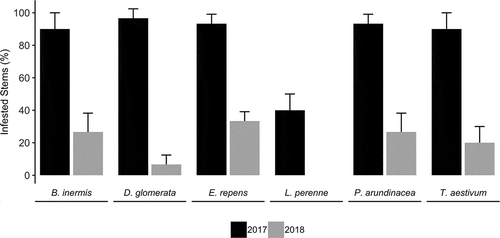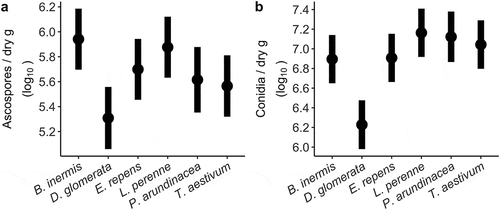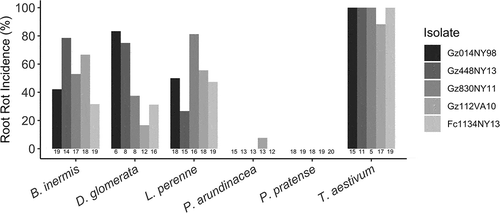Figures & data
Fig. 1 Survival of Fusarium graminearum in grass stems over two winters. Bars show per cent pathogen recovery from stems after one and two years of overwintering in artificially infested debris deposited outside in autumn 2016. Whiskers represent standard deviation of three replicates, each containing 10 stem segments. Lolium perenne was significantly less likely to be colonized than other hosts (P ≤ 0.001), and by year two all the grasses had decreased to less than 40% infestation rates (P < 0.001).

Fig. 2 Fusarium graminearum spore production on six different grasses. Bars are confidence intervals (95%) around least square means from a linear mixed model of (a) ascospore and (b) conidia production on grass stems averaged across 10 isolates of F. graminearum. The number of spores produced was significantly affected by host in both cases (F5,8 = 14.30, P < 0.001 and F5,8 = 43.45, P < 0.001, respectively).

Fig. 3 Incidence of root rot caused by five isolates of Fusarium on the seedlings of six grass species. Host species had a significant effect on disease incidence (F5,419 = 91.04, P ≤ 0.001), and there was a significant interaction between host and isolate (F20,419 = 3.01, P ≤ 0.001). Sample sizes are included below each bar.

Table 1. Fusarium isolates used in this study.
